We get a lot of questions about what is the best “first model.” The answer to that question hinges on a number of factors:
Are you a plastic modeler who wants to move to wood ship modeling?
Do you have woodworking experience? Do you have tools?
Or are you brand new to modeling in general?
And, perhaps most important: how much do you want to spend?
Because everyone answers these questions differently, and those different answers may lead to different kits, we are producing a series of box opening videos featuring a number of different wood ship model kits that might be good first models.
In this video we take a look at the Mini-Mamoli line of solid-hull kits. Mamoli kits are now produced by Dusek, a Czech ship model kit manufacturer, but these kits are the older versions made in Italy. I haven’t had a chance to look at the new kits, but based on the quality of Dusek ship model kits I have seen, I don’t expect many changes unless they are to improve them.
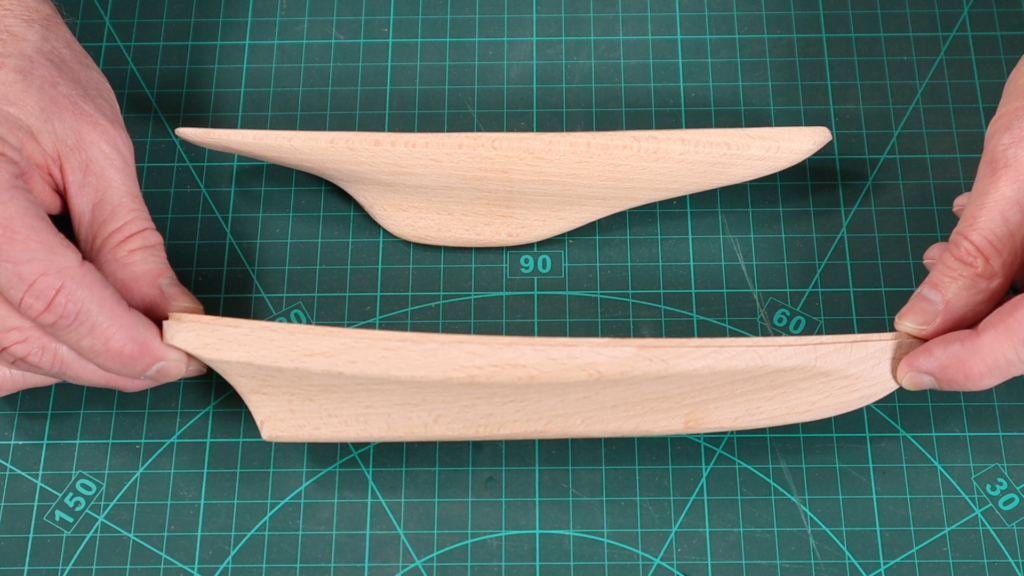
While somewhat rudimentary in detail due to their small size, the kits include fairly well-carved hulls, which is good since the plans don’t offer ship lines to improve the shaping.
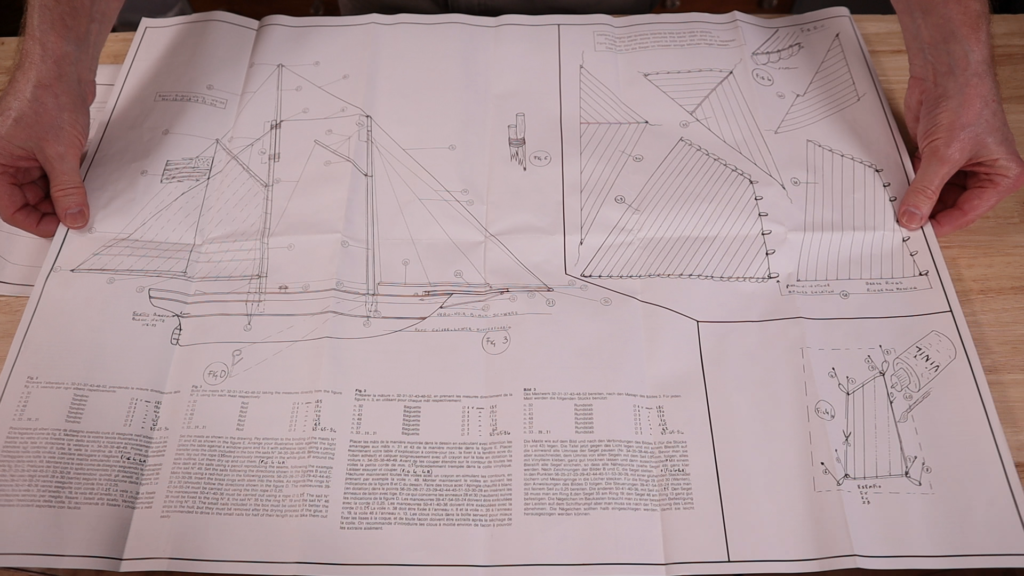
The kits include a single double-sided page of plans and instructions, which include full-size sail plans.
The English instructions are a bit vague, so if you haven’t at least built plastic ship models, you may want to pick up a book or two on the subject to prepare yourself.
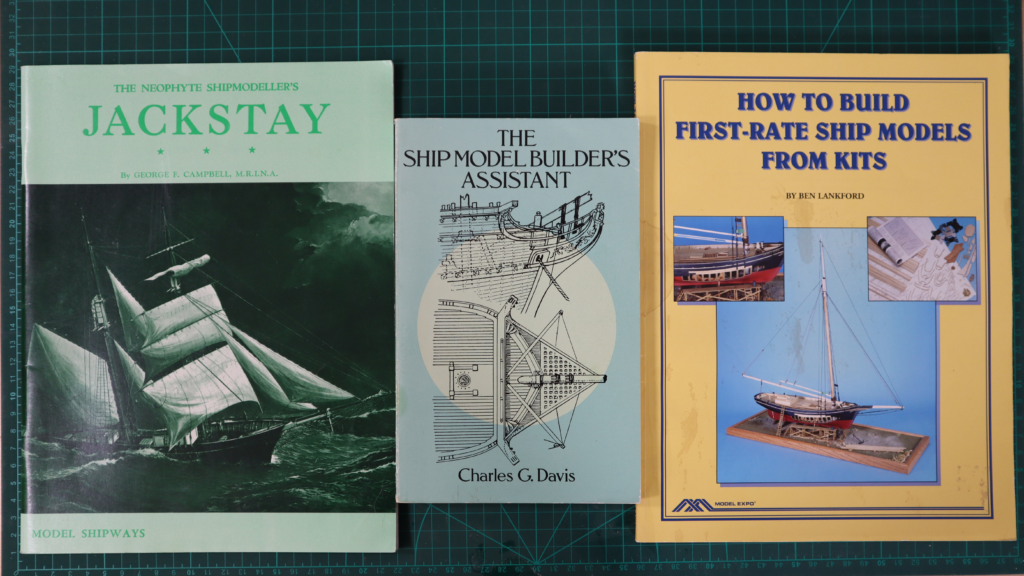
Even if you have built ship models, these books offer some good information on detailing. And after all, can you ever have too many books on model shipbuilding?
Note: if you use these links, this website may earn a commission. This costs you nothing extra.
The Neophyte Ship Modeler’s Jackstay
eBay: https://ebay.us/Qll6Qv
Amazon: https://amzn.to/3I3z6QV
How to Build First-Rate Ship Models from Kits
eBay: https://ebay.us/Rt2mOe
Amazon: https://amzn.to/3tNGFpB
The Ship Model Builder’s Assistant
eBay: https://ebay.us/tGfhTT
Amazon: https://amzn.to/3MExUa6
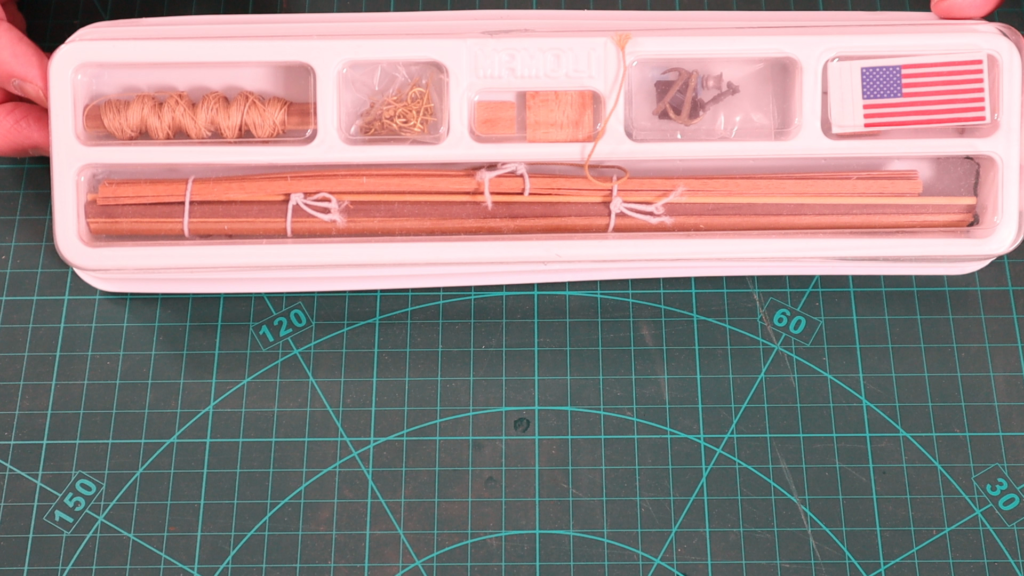
The kits include a plastic insert organizing all the parts, including wood for the bulwarks, planking, and masts, as well as rigging thread and wood block for the deck furniture.
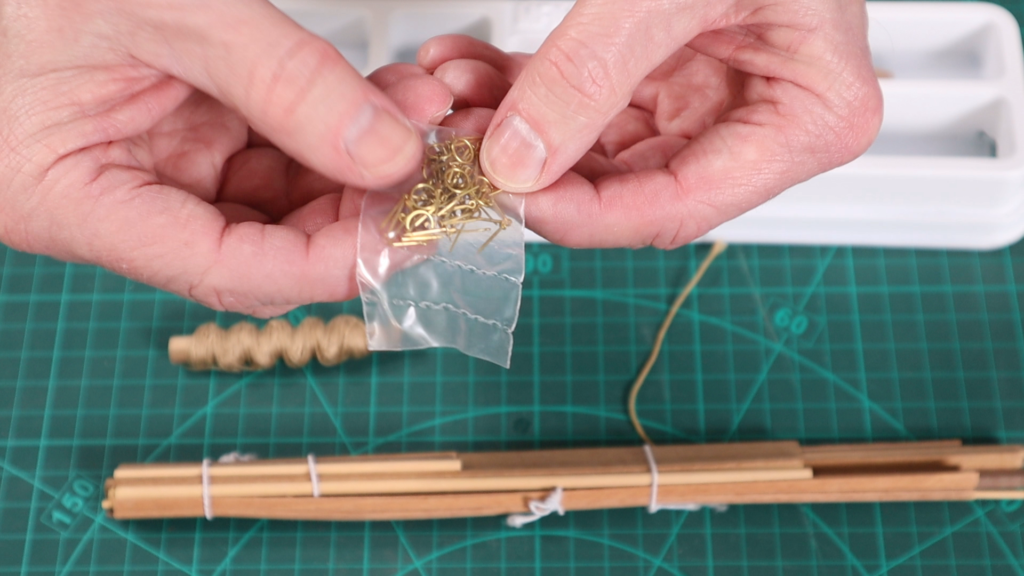
The parts include brass split rings, nails and eyebolts.
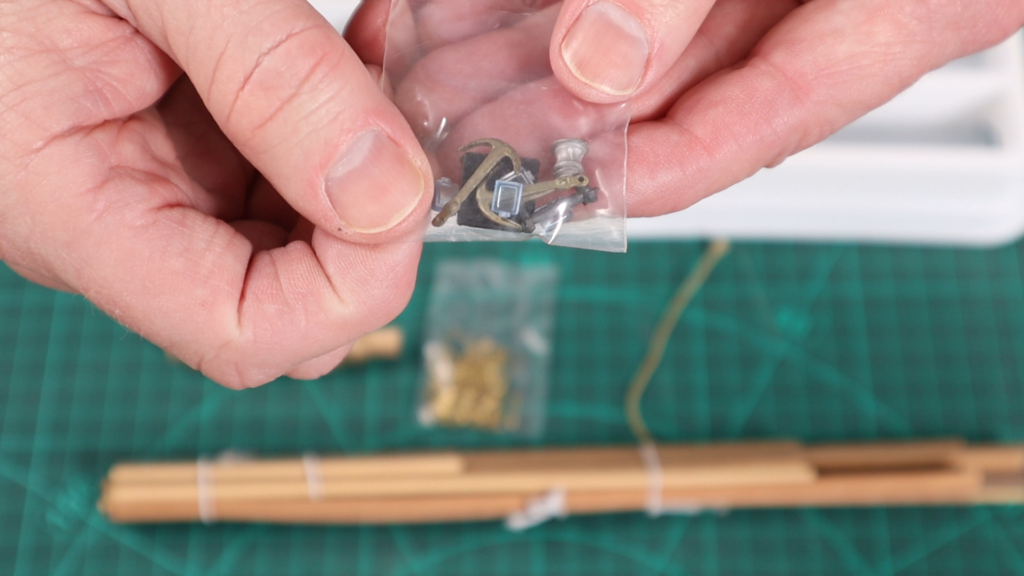
And cast white metal and plastic details.
While the manufacturer doesn’t specifically say that these kits are for beginners, they assume the builder does not have micro-sized drill bits, and include a pin in the kit, which they recommend heating in a flame to then burn holes on the hull for the eye bolts.
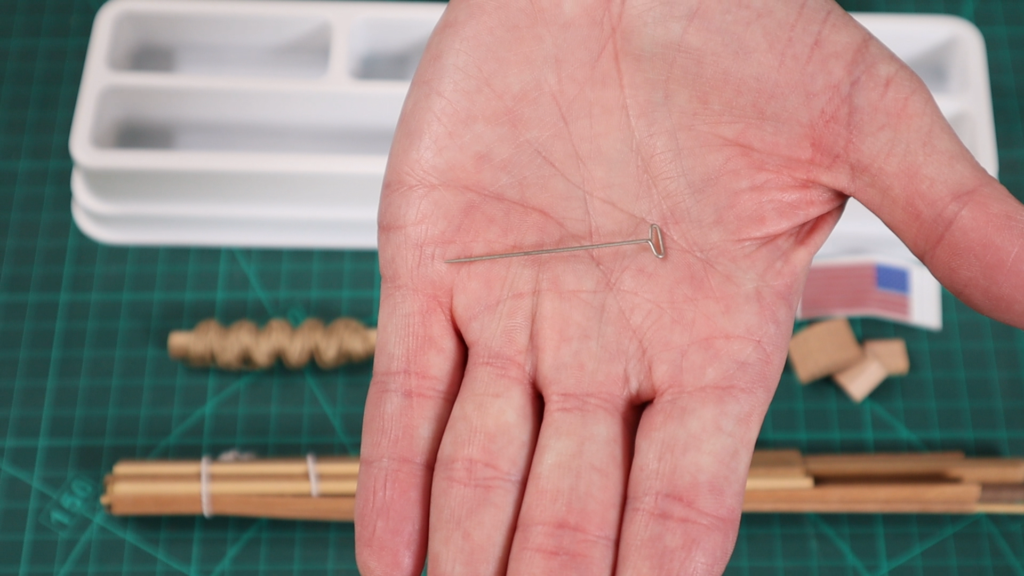
Just in case it has to be said, don’t do that burning pin thing. If you don’t have a pin vise with micro drill bits, spend the little bit of money it costs to get one. You will thank me later.
More links we might earn a commission on:
Pin Vise on:
eBay: https://ebay.us/QQEJzi
Amazon: https://amzn.to/3MJQqhe
All in all, I think these are a pretty good starter kit. There are a few things that you could improve on it. Using a lines plan for America you could improve the shape of the hull, especially along the keel where it looks a little wide. The ship’s lines plan for America is in our book Selected Plates from Souvenirs de Marine: Ship Plans by Vice-Admiral Francois-Edmond Paris. You would have to determine the size to reproduce the plans, but this could be done by measuring the kit hull and the plans, and then calculating the difference. Another improvement would be buying some smaller rigging thread in both tan and black, and buying some very small blocks and deadeyes for the rigging. Model Expo has blocks and deadeyes as small as 2.5 mm, which would be 350 mm, or about 14 inches on the prototype. That’s a bit large, but they could be carefully sanded and filed down to where the size was less noticeable.
Yet more links we might earn a commission on:
Model Expo (Model Shipways) on:
eBay: https://ebay.us/kRUmR2
Amazon: https://amzn.to/3CBrROV